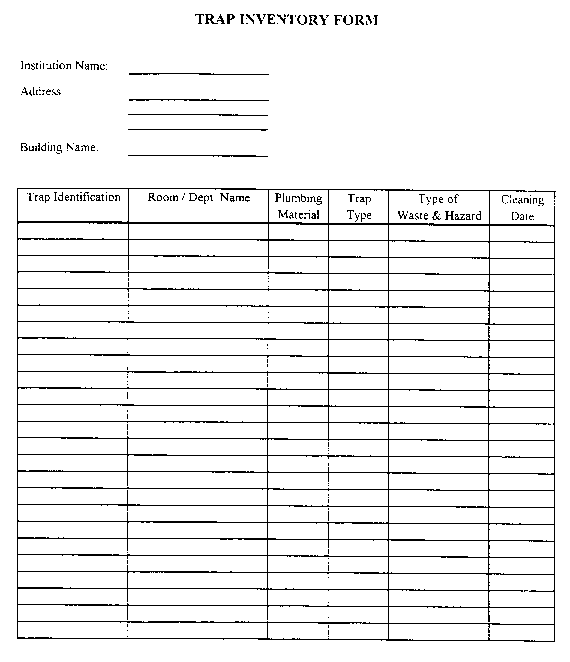
Figure 6.1 Example Trap Inventory Spreadsheet
As explained in the problem overview, mercury accumulation within "Special Waste" conveyance piping systems containing biomass growth creates a complicated wastewater compliance issue. The following procedures have been developed for use during trap removal and cleaning maintenance. Trap cleaning and removal procedures, in section 6.5, will accomplish the following objectives: trap location / identification, removal of elemental mercury (Hg0) and removal of biomass growth.
Trap location is accomplished by preparing a complete and detailed inventory of all "Special Waste" sources. After all sources are identified, a facility "Special Waste" conveyance pipe drawing should be generated with all traps to be identified by a unique number. A master inventory of all traps should be generated to record and track all trap cleaning events. Each individual trap should be tagged or labeled with its unique number, cleaning date, name and signature of the person performing the cleaning.
Trap identification can be accomplished as a part of locating the necessary information to generate the conveyance pipe drawings. An additional piece of information would include the type of piping material and associated trap. Figure 6.1 contains an example of a trap inventory spreadsheet.
When a trap is removed for the first time, it may contain elemental mercury. This can usually be identified as a pool of silvery liquid which is separated from the trap wastewater. Elemental mercury usually and accidentally gets disposed down laboratory sinks and floor drains as a result of broken laboratory equipment. Some elemental mercury sources include old mercury thermometers, thermostats and blood pressure manometers. If a trap contains elemental mercury, it should be collected and disposed as a mercury waste. Section 10.0 of this manual explains the procedures for disposal of mercury wastes.
Typically a trap will not contain elemental mercury, but almost every trap and conveyance pipe will eventually accumulate biomass. The biomass is identified as a slimy light or dark brown film on the internal surface of the plumbing material. It has been determined that the biomass, over several years, will accumulate dissolved

Figure 6.1 Example Trap Inventory Spreadsheet
mercury from various chemical reagents and other laboratory chemicals. The bulk of this growth will occur on the bottom and wetted sections but some biomass will grow along the sides and top of the non-wetted section of the plumbing materials. This capillary action of growth is the most difficult to remove. When the biomass grows on the non-wetted surfaces it eventually dries out. This dried out biomass develops a strong adhesion to the plumbing surfaces as it becomes encrusted.
1. Identify necessary traps for cleaning and discuss the trap cleaning operation with the building's occupants. Explain to them how the effect of the cleaning will interrupt their operations and indicate for how long.
2. Before any traps are removed, it is important to ask the occupants about the nature of their laboratories' wastes, identifying health and safety hazards. Before handling and cleaning traps that are located in areas that contain hazardous materials, all traps should be checked by the appropriate administrator for approval (i.e. - if a radioactive isotope is being used in a room, have the Radiation Safety Department check out the trap to assure that it is safe for cleaning).
3. After the building occupants have been made aware of the trap cleaning program and it is determined that it is safe to handle traps, actual trap cleaning can be started.
4. It is important that personal protective equipment (PPE) be worn by all personnel doing this trap cleaning at all times. It is recommend that all of these procedures be reviewed by an internal Health and Safety Officer.
5. All materials found inside the traps must be handled and disposed as mercury waste. Section 10.0 of this manual explains the procedures for the disposal of mercury waste.
6. The removed trap can be cleaned with either a rag or flexible brush. The use of a cleaning agent and some type of disinfectant may also be used to help ensure that complete removal and disinfection is accomplished
7. After traps are removed, cleaned and replaced, a tag or label should be put on or updated with the unique number, date of cleaning and the cleaner's initials.
8. After cleaning is completed and the area is returned to its original condition, all access panels and other structural materials should be reinstalled. Before leaving the area, inform the building occupant that the cleaning is complete.
9. All trap cleanings should be logged on the Trap Inventory Form.
10. It will be necessary, in the future, to inspect these traps for reoccurring biomass growth. These inspections should initially be performed on a quarterly basis. Once a sufficient level of experience has been obtained, inspection frequencies can either be increased or decreased, depending on the rate of returning biomass.
11. NOTE: Have spare traps available for replacement.
| Previous | Contents | Next |